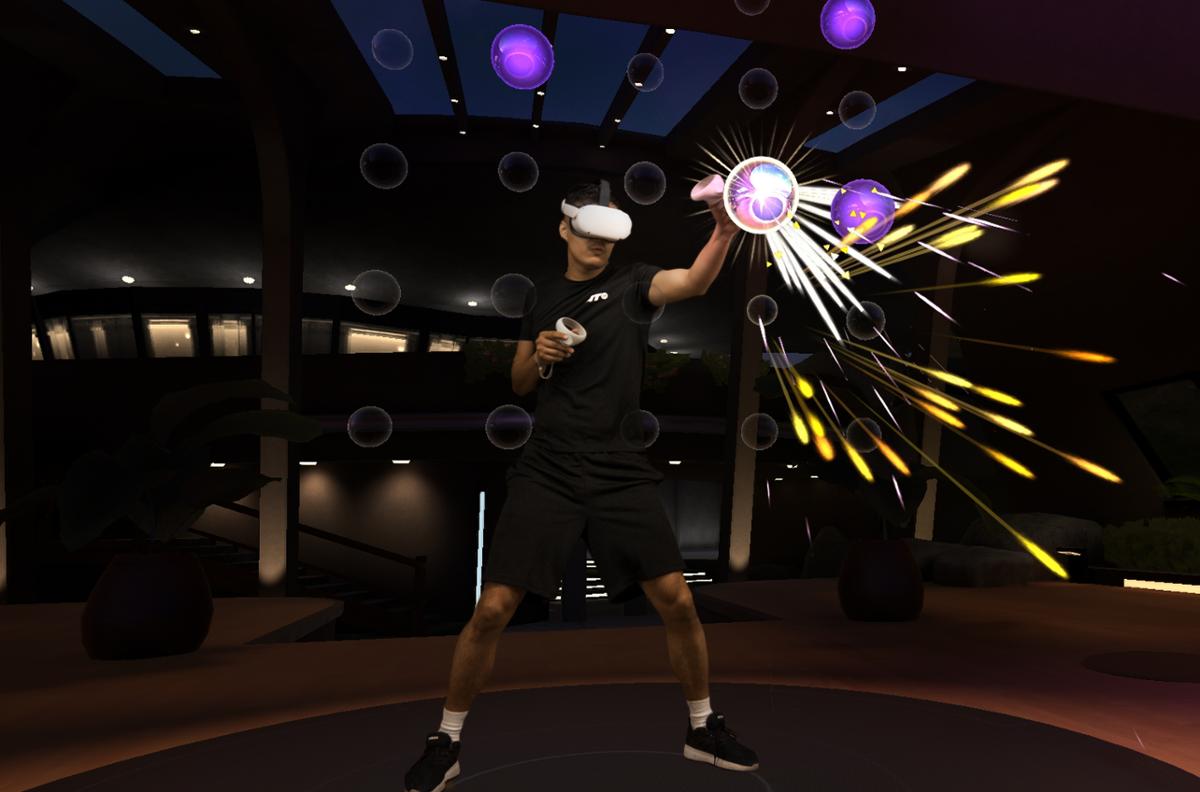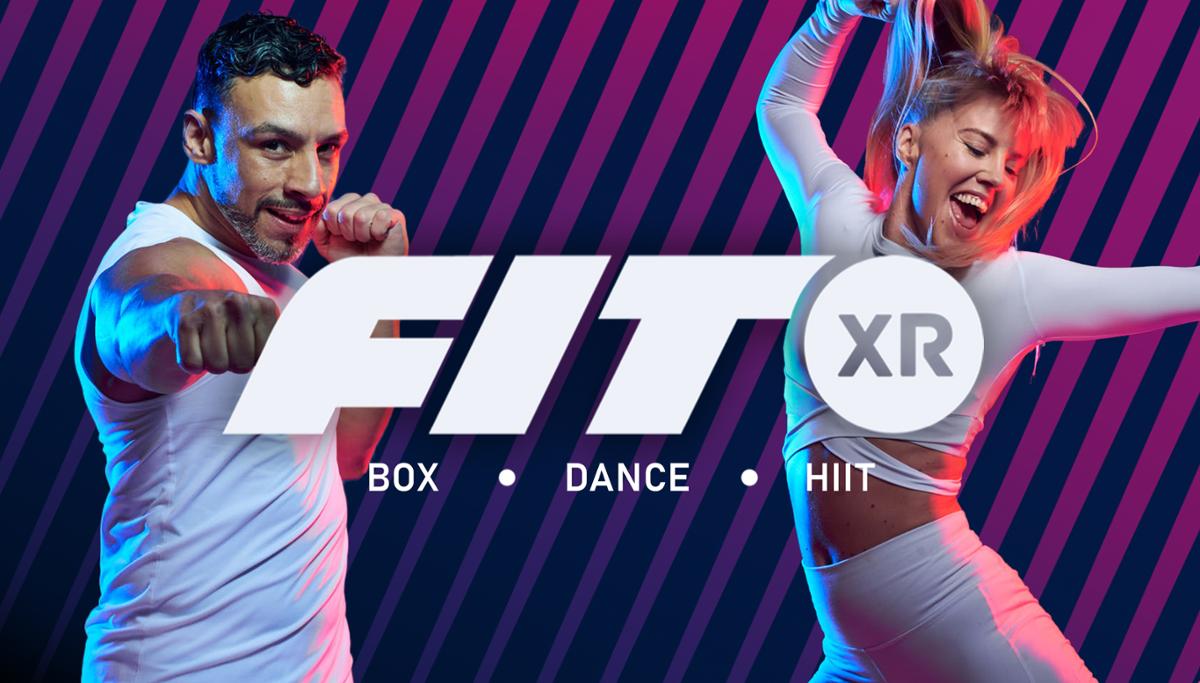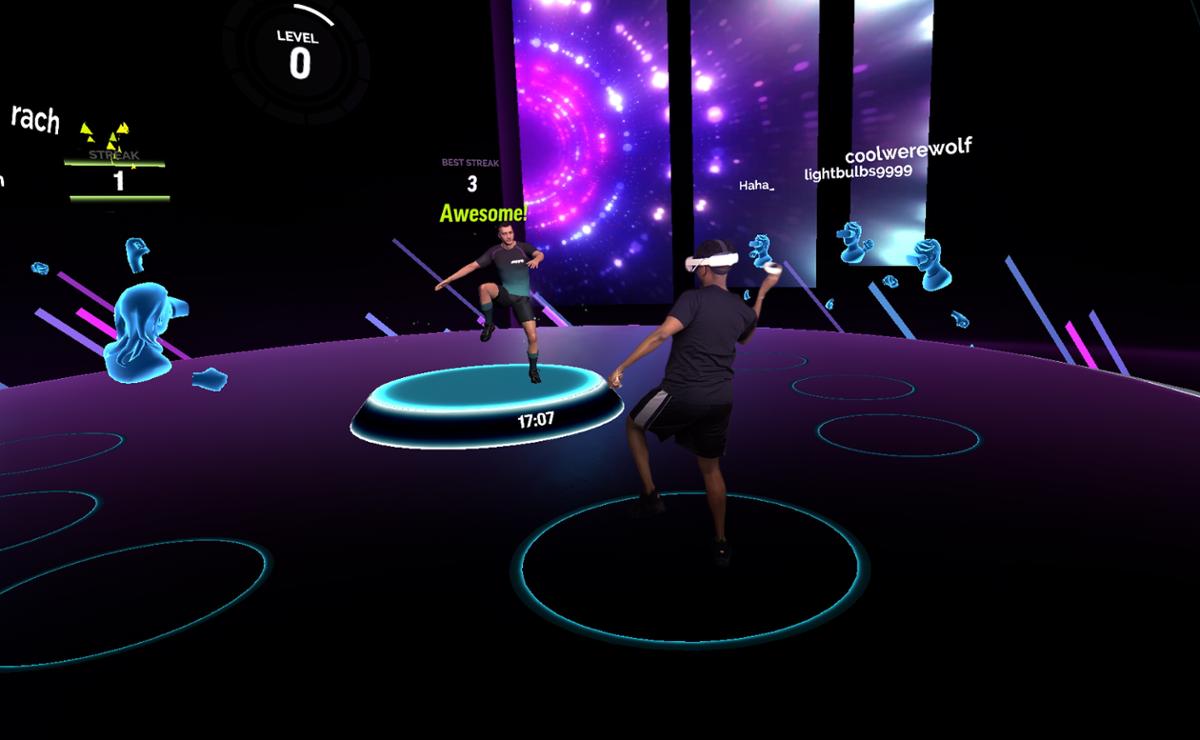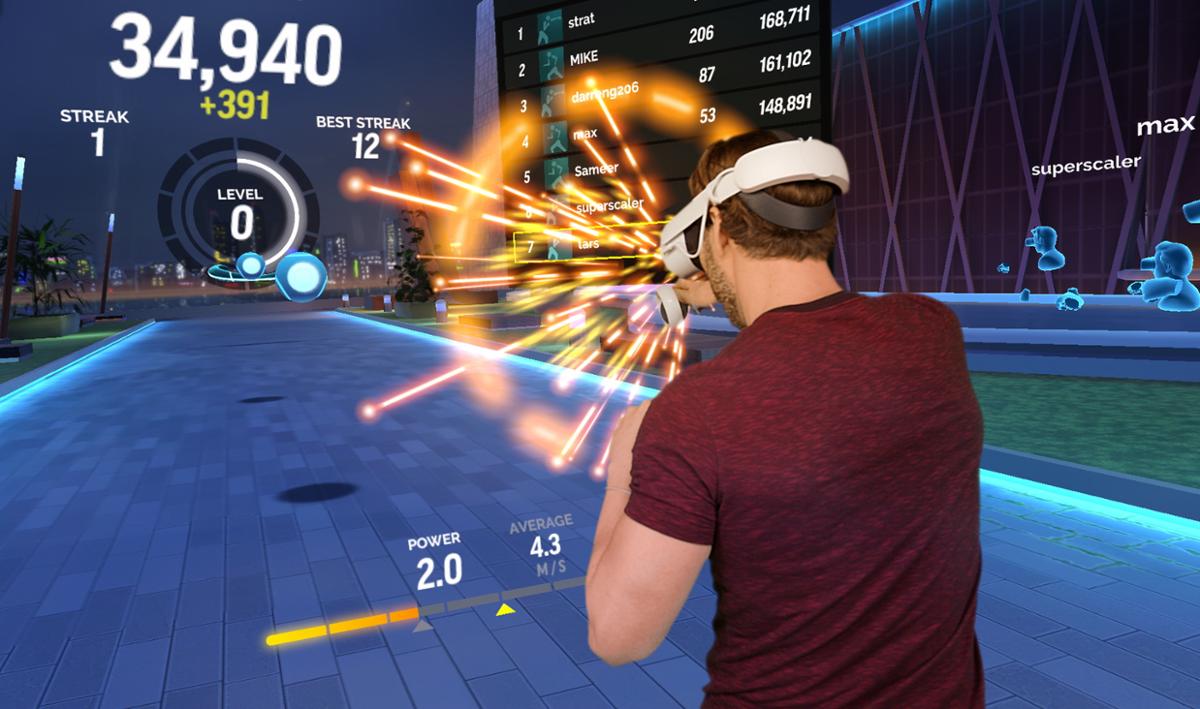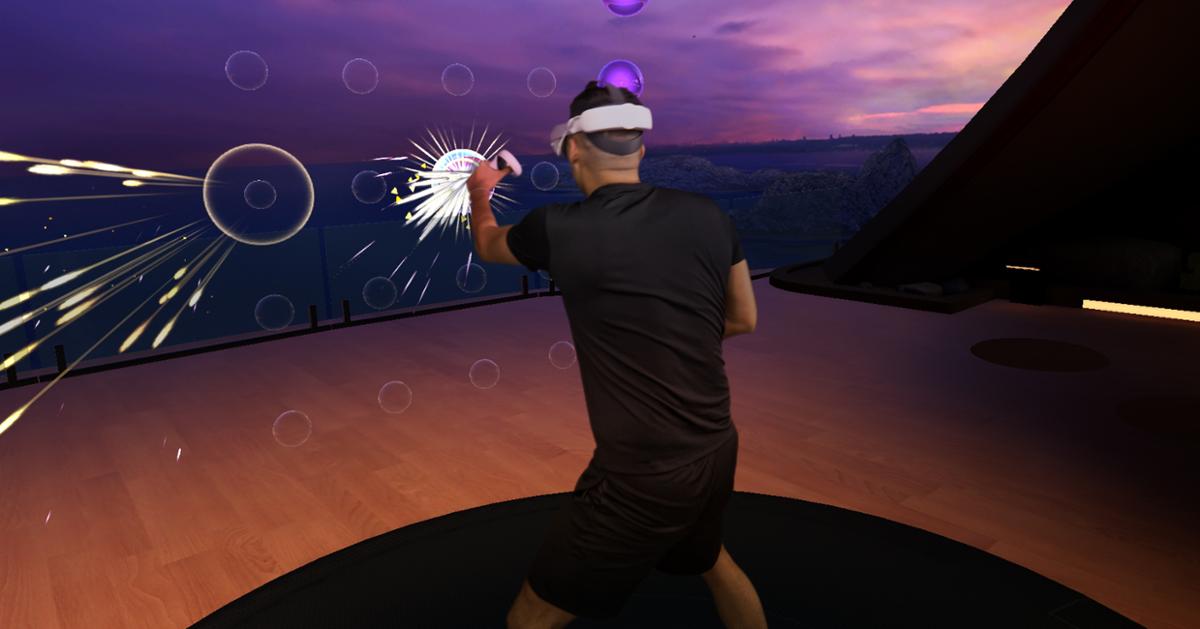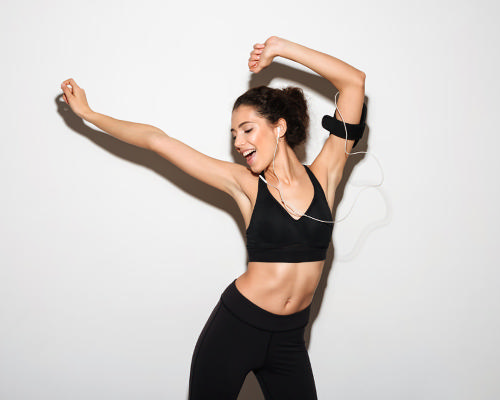Tell us about you
I received law and finance degrees from the University of Otago, New Zealand and started my career in the consulting team at PricewaterhouseCoopers in New Zealand.
In 2014, I moved to London and worked in private equity and venture capital before completing an MBA at the Judge Business School at the University of Cambridge, where I met my FitXR co-founder Sameer Baroova.
Where did the idea come from?
On meeting, Sameer and I quickly discovered we shared a passion for wanting to leverage the power of VR/AR to change how people exercised and, in the process, transform a few lives for the better. We believed the next computing platform after the smartphone was going to be a mixed reality headset, and that this would change how people worked out at home, in the gym and outdoors.
I’ve always been consumed by fitness, specifically the team sport model, because when you’re playing team sport, it doesn’t feel like exercise and you achieve a flow state. I wanted to bring that same feeling to traditional exercise so people would forget they were exercising because they were having fun.
FitXR was born in a garden shed in Woking, England in October 2016. From the beginning we were intent on delivering a holistic and varied fitness experience.
What exactly is FitXR?
FitXR has built one of the world’s first virtual fitness clubs, merging immersive VR with unparalleled total body workouts designed by top fitness experts. FitXR provides a truly engaging, multiplayer experience with constantly refreshed content, studios, classes and music. To quote one of our members, “it's the best thing to happen to exercise since exercise".
It’s all about making fitness fun and accessible to everyone. The main problem with the traditional gym is that the wrong people are going to it – it’s those who already have a background in exercise and sport, who continue to train throughout their lives. These people enjoy the gym experience, or at least the physical and aesthetic benefits it provides. But this is not the case for the increasingly inactive and obese population who are put off by the traditional gym experience.
We believe VR fitness can help bridge this gap and that the way to appeal to a wider range of people than just those who are in shape, is to make exercise feel more like play.
When you're a kid running around outside you don’t think of what you’re doing as exercise. If adults felt that same joy when they were working out, more would form consistent habits. This is the essence of FitXR.
When did you launch?
Following much prototyping, FitXR originally launched as BoxVR in June 2017. BoxVR migrated to FitXR in 2020 when we introduced our Dance studio. And in May of 2021, we released our latest studio, HIIT.
What is the payment model?
FitXR membership is available on the Oculus Quest for US$9.99 a month.
What are the benefits of using VR in fitness classes?
The home fitness category is crowded with everything from free videos to subscription platforms to premium hardware. Most brands do their best to offer a surrogate for a gym experience or exercise class, but can’t deliver the experience of real group training in the same space, at the same time.
FitXR transforms home fitness into something more. With the integration of connected gaming technology and group fitness conventions, FitXR delivers an unparalleled VR fitness experience which is accessible by anyone, from anywhere.
We believe in a future where exercise happens everywhere – whether that’s the gym, the park, or at home – and is enhanced through engaging technology that extends your reality.
How did you decide on the three disciplines?
When we were developing FitXR, we tried various fitness verticals, such as boxing, spinning and rowing. Taking a cue from group fitness classes, we were inspired by the power that comes from exercising together and wanted to bring this to our virtual fitness club.
Boxing rose to the top based on its functionality. But, we knew we had to offer more, so we introduced our dance studio in 2020 to give people more variety.
Our latest studio – HIIT – is a whole new take on home workouts. The studio features highly competitive classes within a virtual fitness space. An interactive cardio wall is inspired by a fitness device used to help train F1 drivers for better reaction timing. The HIIT studio delivers more variety to FitXR users for a well-rounded workout experience.
In the same way that a traditional HIIT class involves short bursts of intense activity to get your heart pumping, the HIIT Studio tests your agility, endurance and reaction speed through a series of fast-paced cues that you smash as they become illuminated around you – at speed – within the game space. Think whack-a-mole, but on a totally different level: way more engaging, challenging and fun.
Boasting a mix of instructor-led exercises and reaction-based fitness games, we believe the HIIT Studio is like no other VR experience on the market. Built from the ground up, based on sports science, it takes inspiration from professional athlete reaction training equipment, yet caters to all abilities and fitness levels. The HIIT Studio is the most competitive of the FitXR studios, in both multiplayer and solo mode.
The HIIT Studio is pushing boundaries, as it doesn’t rely on the beat of music – the user drives how aggressively they push themselves. And while rhythmic based fitness classes worked well at the start, the move to HIIT workouts signals a true coming-of-age moment for VR fitness. This is the start of the next phase of what’s possible in VR fitness and what FitXR plans to continuously deliver against as the technology evolves.
What gamification techniques have you used?
We’ve developed a level system that gives a score out of 10 for every class completed. We also record stats that are relevant to each studio, such as average punch velocity for Box and average reaction speed for HIIT. These are all presented to you when you finish a class and it lets you know if you beat your personal best.
Players often share screenshots of their results on social media as a badge of honor and have even come up with hashtags that call out specific achievements. For example, #goldbar for achieving a personal best and #fullstreak for reaching a 100 per cent streak, which is very difficult to do!
All in all, the gaming element ramps up the fun, encouraging members to come back for more.
How does multiplayer mode work?
Our multiplayer feature allows up to seven members to work out together, live. Members can now also chat with one another before, during and after class and can see the other members with whom they’re working out during class.
We listen intently to our community and constantly evolve FitXR based on their feedback. Multiplayer was one of the most requested new features.
How often is new content added?
There’s a new class offered each day, designed and choreographed by a team of professional fitness instructors. We’re also constantly updating our environments, giving our members the option to choose the setting they most like to work out.
We’re also delivering new and exciting music for our members to enjoy while working out. We recently announced we’re partnering with major and indie labels to provide a constant stream of new tracks to power our members’ workouts. Our classes now feature music by well-known artists such as Calvin Harris, Tiësto and David Guetta.
How popular is VR fitness and how do you think this will grow?
VR fitness benefited from COVID-19 lockdowns, as people were forced to find alternatives to the gym. There was a definite uptick in users during this period. However, I believe the VR fitness trend will continue to grow. There are many people who are intimidated at the thought of walking into a gym and VR fitness allows them to work out in the comfort and privacy of their own homes.
We also hear from our more active members that they like to use FitXR as one part of their fitness routines. And with the technology continuing to evolve, the space is ripe for extended growth.
Do you see VR fitness studios as a potential offering for physical health clubs?
Yes, we see the benefit of integrating VR fitness into the traditional health club setting and we would be open to collaborations.








